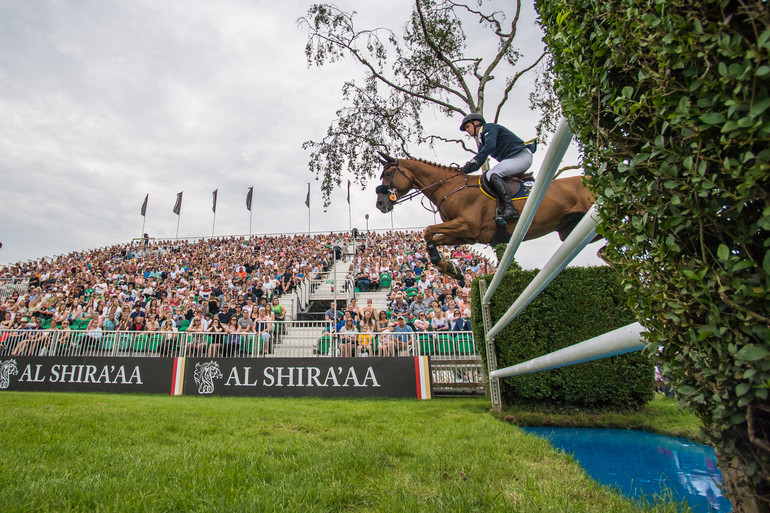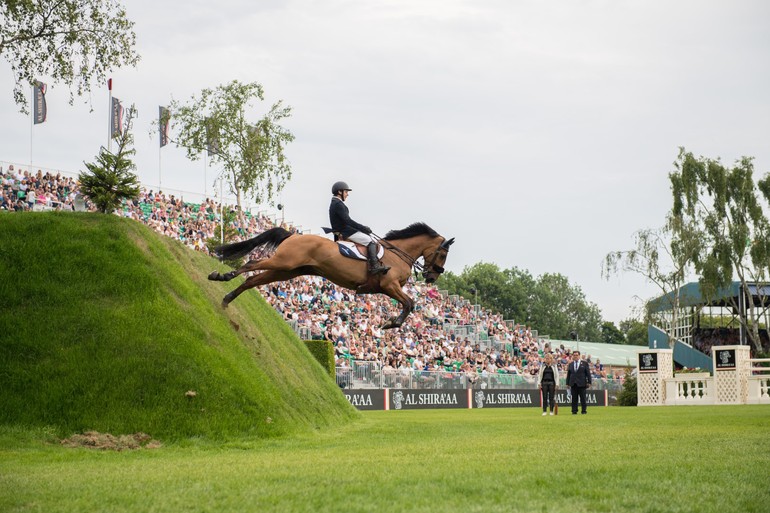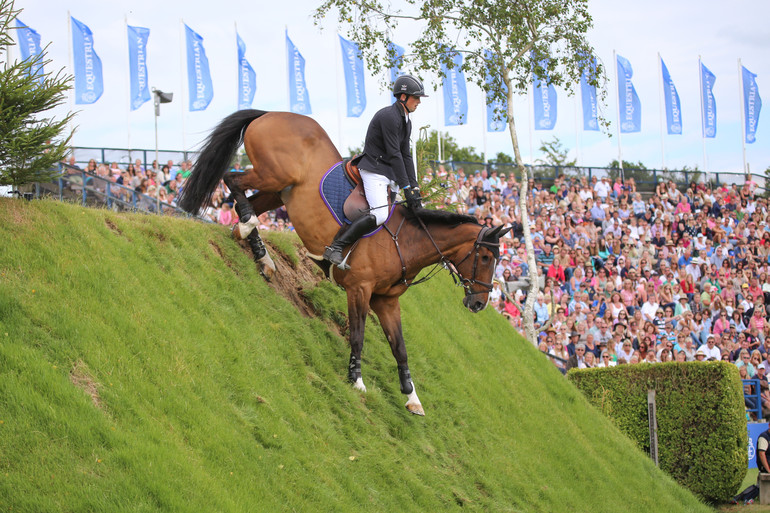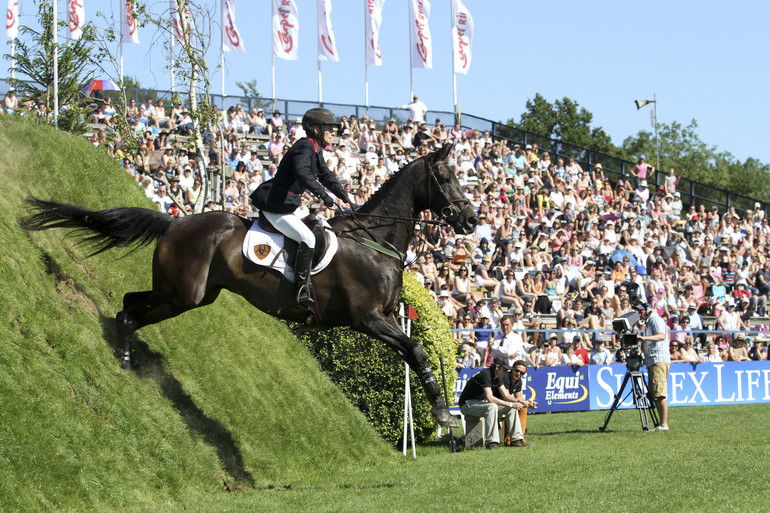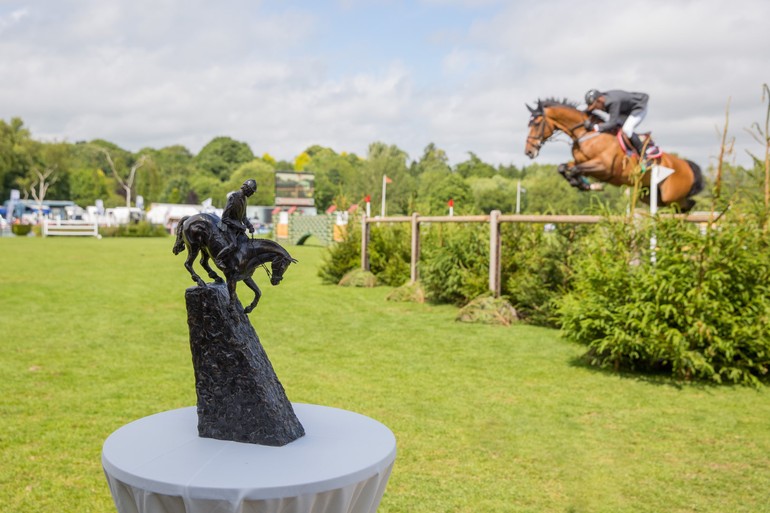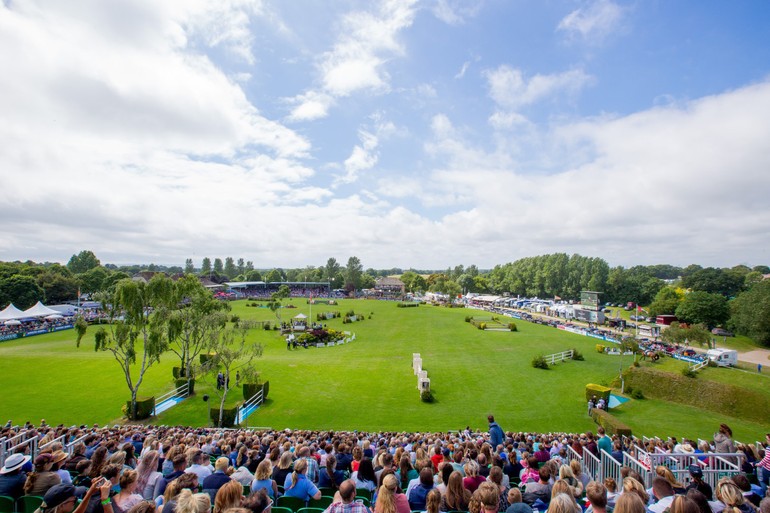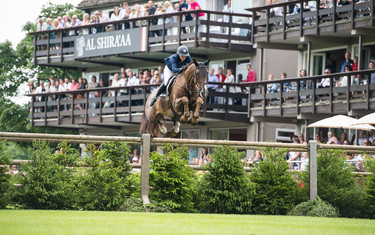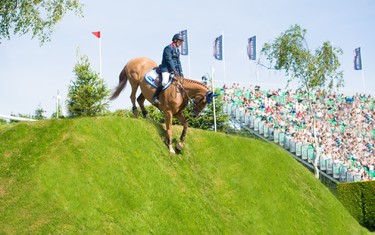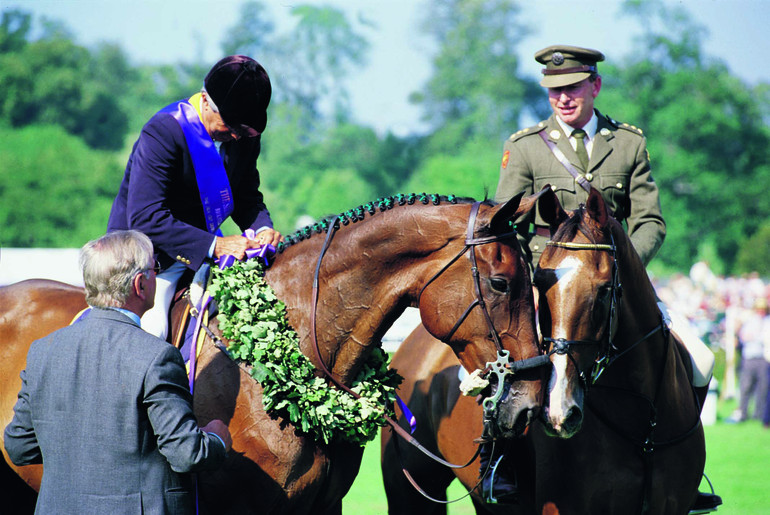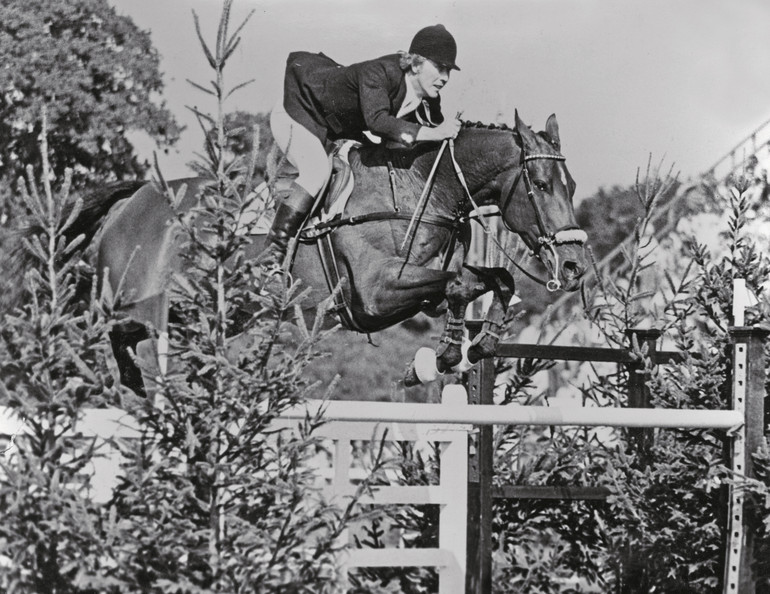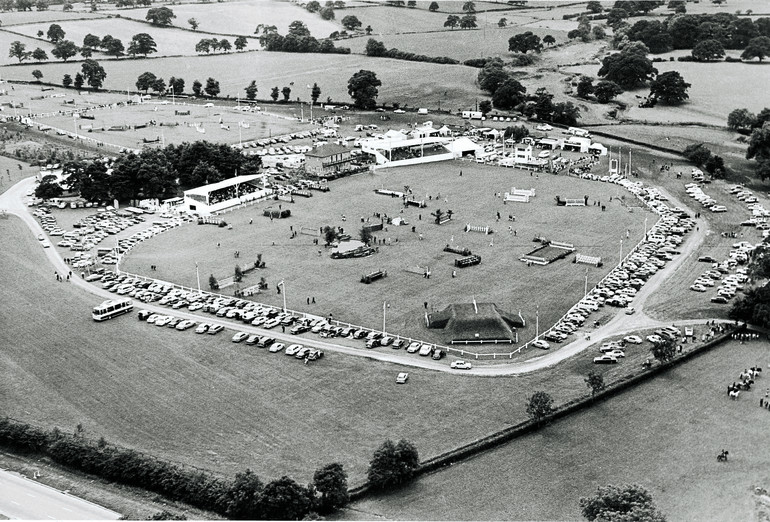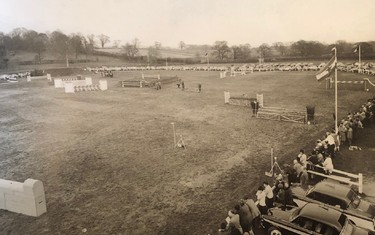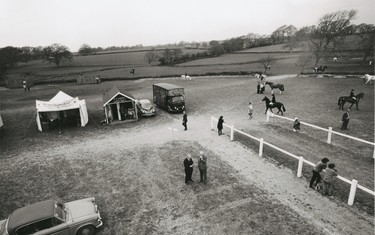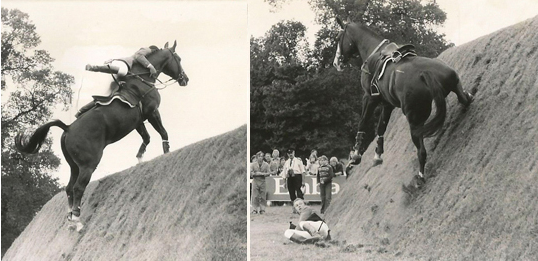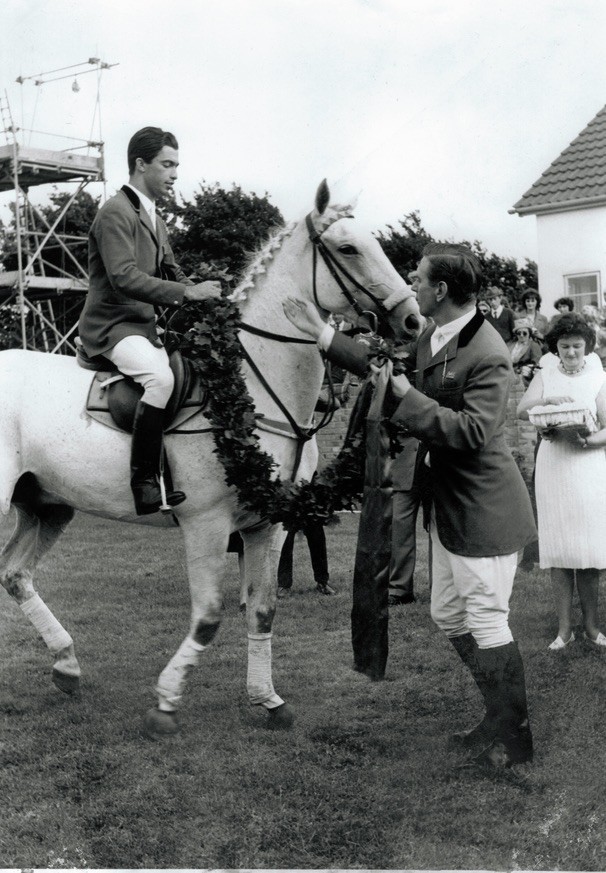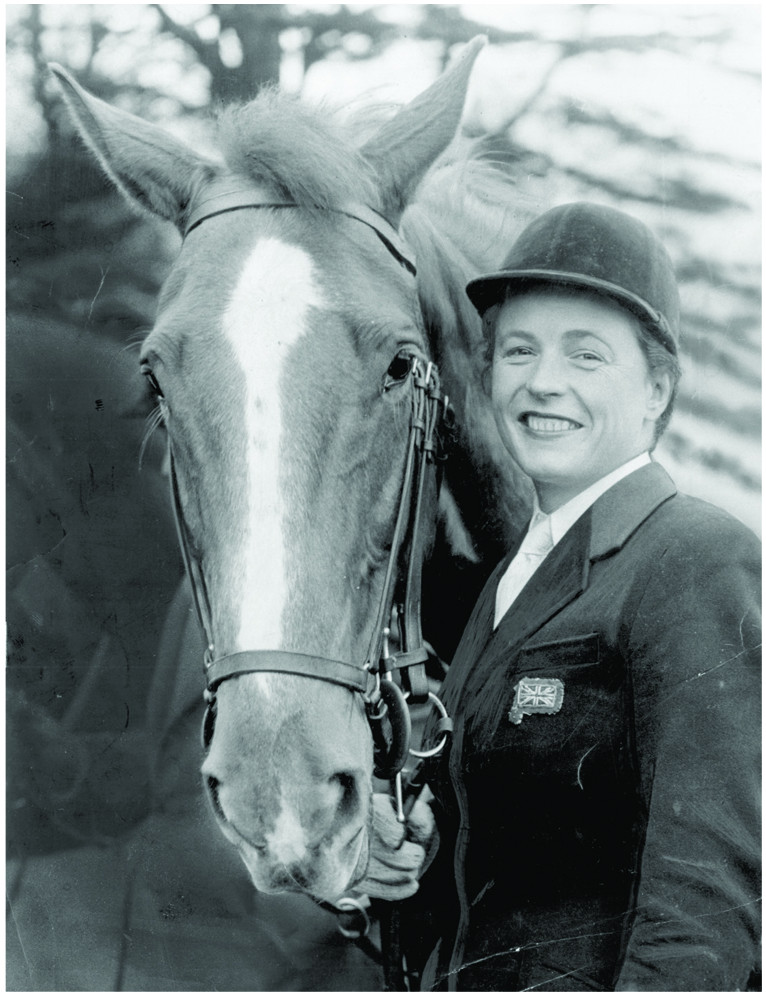Text and photos © The All England Jumping Course, Hickstead
It’s no easy thing getting a clear round in the Al Shira’aa Derby, which is why there’s only been 64 clear rounds since the class first took place in 1961. The early section of the course is relatively straightforward, aside from the sheer size and scale of the jumps, and the fact not every horse is bold enough to take on Derby-style fences. Those who still have a zero scoresheet by the time they jump the Road Crossing at fence seven then must tackle the most difficult section of the course – the 10ft 6in Derby Bank, the Devil’s Dyke – widely regarded as the most difficult fence - the huge 4.5m water jump that leads away from the entrance, the Derby rails that follow, which require immediate collection after galloping over the water, and the daunting height and gappy poles of the open Ditch. There is no let up towards the end of the course either, with the final four obstacles either up to full height or width.
Little wonder, then, that riders will often punch the air in sheer delight when they land after that final wide oxer, having jumped clear round one of the most tricky and famous courses in our sport. But what if their Derby challenge isn’t over? What if they must jump round a second time, albeit over a shortened version of the course? We take a look back through the Derby archives to remember some of the great rounds against the clock.
2019 – Mikey is the best of three
It’s unusual to get more than two clear rounds in the Hickstead Derby, but in 2019 – the latest renewal of the class – there were three combinations who left all the fences standing in round one. Shane Breen produced the first of the day’s clears with Golden Hawk, Mikey Pender then ensured a jump-off by going clear with his Puissance specialist Hearton Du Bois Halleux, before Britain’s Harriet Nuttall added a third faultless round with her ultra-consistent A Touch Imperious. Shane went first in the jump-off, setting off at a strong pace in the hope of putting the pressure on his two rivals. But when the Derby rails and the first part of the double of gates came down, his chance of lifting that coveted Boomerang Trophy looked to be over. Michael then came in and delivered another clear, so only Harriet could deny him victory. But a foot in the huge Open Water proved costly for Harriet, who had to settle for runner-up spot for the fourth time, leaving Mikey to lift the trophy at the tender age of 19, the youngest winner ever.
2014 – The closest finish in Derby history
The stage was set to be an epic contest. Phillip Miller and Caritiar Z, winners in 2013, and Trevor Breen and the one-eyed wonder horse Adventure De Kannan, had completed the first round with four-faults apiece, so needed to jump off for the honours. Phillip was the defending champion, while Trevor had repeatedly come so close to lifting the Boomerang Trophy and was determined to finally become a Hickstead Derby champion.
Phillip was first to go in the jump-off, but Caritiar Z knocked the first element of the Devil’s Dyke, giving Breen some breathing space. But much to the shock of the crowd, Hickstead specialist Adventure De Kannan knocked down the Privet Hedge white oxer, one of the most straightforward fences on the course, meaning Trevor had to jump the tricky Devil’s Dyke clear to have any hope of winning. This they duly did, but they still had to catch Phillip’s time. Trevor and Addy stepped up the pace and flew the last to cross the finish line two-hundreds of a second quicker than their rivals, in what was the closest Hickstead Derby final of all time.
2010 – The speed king does it
Any showjumping fan worth their salt could tell you that Guy Williams is a force to be reckoned with against the clock. Back in 2010, in Hickstead’s 50th anniversary year, the Kent-based rider was determined to pick up his first Derby win, having finished increasingly close to the top of the line-up with his brilliant Derby campaigner Skip Two Ramiro. Guy was drawn last to go in the first round, and he knew he had to jump clear to ensure a jump-off against Tina Fletcher and Promised Land, a quirky but scopey gelding who had produced the only other clear.
Tina was first to go against the clock, and knowing Guy was on a much faster horse her strategy was to go for another clear round and put the pressure on Williams. But they don’t call him Mr Cool for no reason, and Guy duly matched Tina’s clear but finished some 15 seconds quicker. Fortunately for Tina, she didn’t have long to wait to get that Derby winner’s sash – Promised Land delivered the sole clear round 12 months later to give her the title.
2006 – Funnell’s first win
William Funnell’s third win with the brilliant Mondriaan in 2009 came courtesy of the only clear round, but in their first two wins the pair had to jump-off for honours. In their first victory, in 2006, William and Mondriaan were among three who finished on four-faults.
David McPherson was quick but faulted at the Privet Hedge, while Geoff Billington and his future winner Cassabachus had two down while trying to beat David’s time. Funnell could then go for a steady clear to net his longed-for Derby win.
2005 – Tactics pay off
Ben Maher shot to prominence when winning the 2005 Derby, beating the late great Tim Stockdale in a jump-off. In the first round, Tim and Fresh Direct Cloudy Night had hit the final element, while Ben and Alfredo hit the middle part of the Devil’s Dyke. In the jump-off, Ben opted for a steady clear on Alfredo, who was a horse who didn’t like to be rushed, while Tim’s ride hit the third fence and retired.
2001 – Corrada’s clears
Peter Charles’ grey mare Corrada won three Derby titles in a row, and never hit a fence in any of her rounds. Her second of three wins came after a jump-off against Robert Smith and Mr Springfield. The latter had set off like a rocket and ended up having two down, paving the way for Charles to win with another perfectly-judged clear.
1997 – Gammon brings home the bacon
John Whitaker and the 21-year-old Gammon came out on top of a drama-filled jump-off in 1997. Their rivals were Captain John Ledingham and the mighty Kilbaha, who had won in 1995 and 1996. But the following year, Ledingham was denied a third consecutive win. Whitaker had set off at a blistering pace in the jump-off, but had the first part of the Dyke down. John Ledingham just needed another clear to win, but to everyone’s shock his horse slipped and hit the first fence, the innocuous Cornishman, and after that he couldn’t get close to Whitaker’s time.
1989 – Skelton’s hat-trick
Nick Skelton had won the 1987 and 1988 Derbies with the only clear rounds, but he had more of a challenge in 1989 when attempting to complete a hat-trick of wins. Joe Turi (Kruger) was first to go in the jump off, but a stop at the Dyke and the final fence down left them on seven faults. Nick and Apollo made the same mistake at the last fence to end up with four faults, paving the way for Philip Heffer to go for a steady clear. However, his horse Viewpoint hit the final part of the Dyke and put a foot in the water, putting them in third.
1977 – Macken dominates
Macken and Boomerang famously won the Derby four times in a succession, a record that has never been bettered. Yet only one of these wins came after a jump-off.
As the highest ranked rider in the world, and the reigning Derby champion, Eddie Macken was always going to be favourite to win the 1977 Derby. But he went one better than that – in a five-horse jump off, Macken claimed the title on Boomerang and finished runner-up to himself with second ride Kerrygold (the renamed 1975 winner Pele), with less than a second separating their times.
1970 – Drama during Smith’s first win
The indomitable Harvey Smith got his first Derby win thanks to a double clear in the jump-off in the 1970 renewal, riding Mattie Brown. Their rivals were Alwin Schockemöhle (Donald Rex), who had had a fall in the Derby Trial when his horse tried to bank the Privet Hedge at fence six. Bizarrely, the same thing happened when jumping off against the clock in the Derby, so Harvey took the win. Harvey came out on top of a jump-off against Steve Hadley the following year – making him the first rider to win back-to-back Derbies – and it’s a victory that remains famous to this day thanks to the furore surrounding Harvey’s V sign.
1964 and 1968 – So near and yet so far for Stroller
Seamus Hayes scored a second Derby victory two years after winning the inaugural class with the only clear. This time, he had to jump off for honours against none other than Stroller, the pony who would go on to jump three Derby clear rounds (yet only win once).
Stroller and Marion’s sole victory in the class came in 1967, when they produced the only clear round. A year later, they were back in a jump-off against Alison Westwood and The Maverick. Marion had to go clear and fast if she had any hope of bettering Alison’s speedy jump-off clear, but when she hit the Derby Rails she retired into second place.
1963 – Pessoa is best of four
No one jumped clear in the third Hickstead Derby, meaning four riders on four-faults apiece had to jump off for honours. Nelson Pessoa and Gran Geste had knocked down the smallest fence on the course, the 1m upright on top of the Derby Bank, but left all the other fences standing. On their second attempt, with the Bank absent from the jump-off course, the pair cleared all the obstacles to take the win. Pat Phazaryn (Sugar Daddy) were runners up, ahead of Anneli Drummond-Hay and Merely-A-Monarch in third, while Sheila Barnes and Sola retired to finish fourth.
In the first ever Hickstead Derby, Seamus Hayes and Goodbye III were the only combination to jump clear, but showjumping followers didn’t have long to wait for the first jump-off, when Ireland’s Tommy Wade (Dundrum) and darling of the sport Pat Smythe (Flanagan) both went clear in the first round in the 1962 renewal. Dundrum was a part-bred Connemara who stood barely 15hh, but the height of the Derby fences held no fear for him. Going first in the jump-off, Tommy Wade and his diminutive partner were clear up to the water but fell foul of the fence that follows, the towering upright Derby rails. Pat could then aim for a steady clear to take the title, meaning she finished four seconds slower but crucially left all the fences standing. In doing so, she became the first woman to win Hickstead’s most famous class, and the first ever winner of a Hickstead Derby jump-off.



